Centenary of the Daughters of St Francis of Assisi
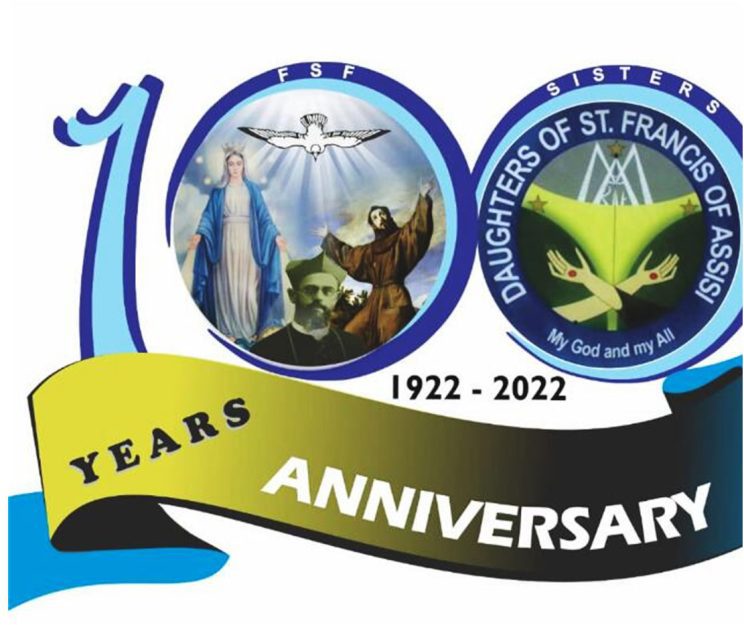
For the diocese of Mariannhill, the year 2022 has marked two significant anniversaries. In August, it was 100 years ago that the vicariate of Mariannhill received its first bishop, Mgr Michael Adalbero Fleischer CMM. At the time the vicariate stretched up to Umtata. Also in 1922, Bishop Fleischer, who had been the superior-general of the Congregation of Mariannhill Missionaries, founded an indigenous religious congregation of African women in his vicariate, the Daughters of St Francis of Assisi (abbreviated FSF).
St Francis of Assisi was Bishop Fleischer’s family patron saint. As a diocesan priest of Würzburg, in southern Germany, and again as a Mariannhill Trappist and missionary in South Africa and Rhodesia (now Zimbabwe), he carried this saint wherever he went.
This patron saint got adopted so intimately by his co-foundress, Sr Aemiliana Ambruster CPS — an American whom he sought from her congregation, the Missionary Sisters of the Precious Blood of Jesus Christ — to tend his newly found congregation.
Mother Aemiliana, as she is fondly called even today by the Daughters of St Francis of Assisi, brought up the first young women of the congregation in the exact spirit of St Francis, emulating him in her own life, and she was assisted by many other sisters of her congregation in this work.
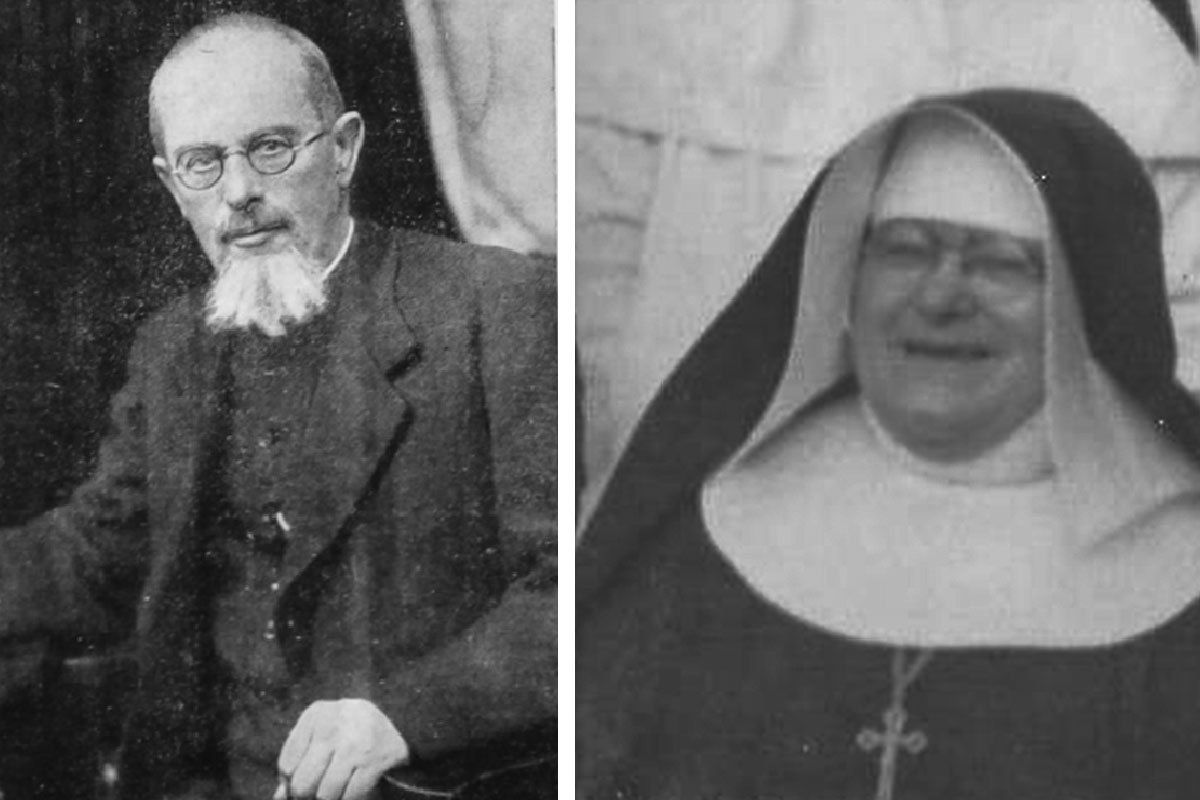
Daughters of St Francis of Assisi co-founders Bishop Michael Adalbero Fleischer CMM and Sr Aemiliana Ambruster CPS
The first Sisters imbibed the Franciscan spirituality, especially the Way of the Penitents of the Third Rule of St Francis, and the FSF charism, through the Precious Blood Sisters, in such a way that it became their second nature — in the way they lived in their daily lives, among themselves; in going about their various ministries in the outstations. They demonstrated it in the spirit of joy that went out through them. It came out as well through the Franciscan songs they composed, which are sung in Franciscan circles even today.
The Early Years
As may be expected, the beginning of anything is often coupled with a number of challenges, as the two co-founders of the Daughters of St Francis of Assisi experienced.
A hundred years ago was another world altogether politically. Globally, the effects of diseases and epidemics as well as the aftershocks of World War I, meted out their impact, directly and indirectly, to the newly-founded congregation. The world suffered scarcity of many things, and consequently there was a lot of starvation and illness suffered by many people all over the world.
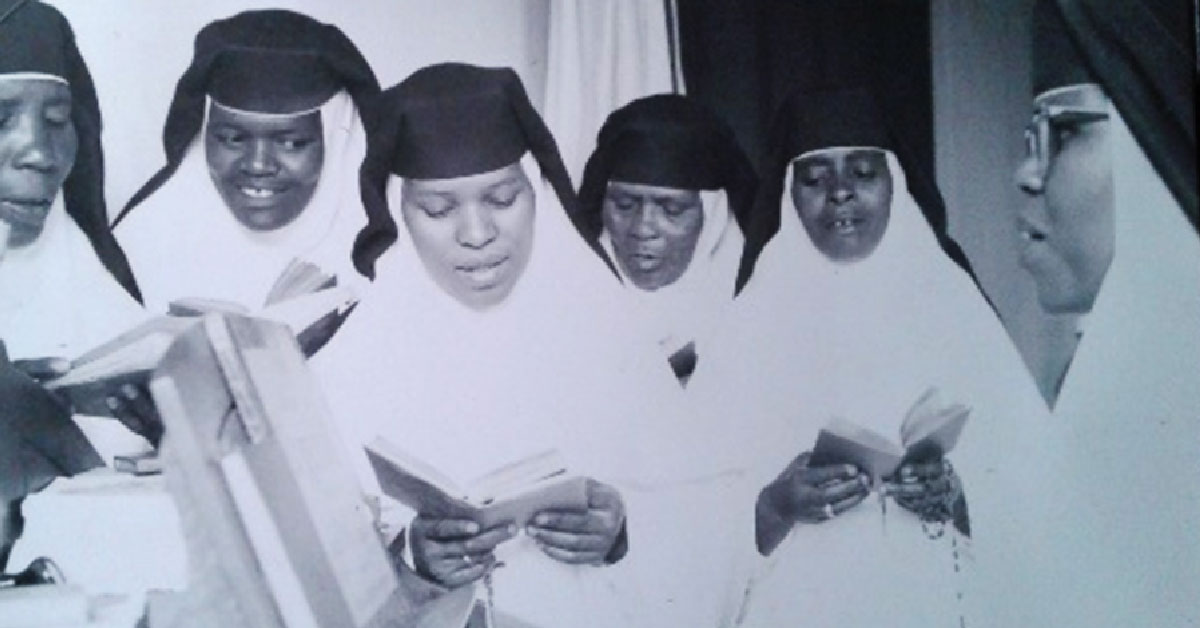
Habit of the Daughters of St Francis before 1970
Locally, the rise of a new kind of lifestyle within the Zulu culture caused a hot stir in many villages. Families of girls who were leaving home to live in the convent were concerned about the lobola issue, the paying of dowries — they were not going to get cows through their daughters! [Ukuthi kukhona intombazane engezudlelwa nkomo!] Because of that, many families were up in arms and even stormed the convent number of times to get their daughters back home.
Many of those girls managed to escape and came back but lived with deep physical and emotional scars as a result of the beating they had to suffer. This affected the newly found congregation.
The strong faith of these co-founders, the faith of the young women who kept coming to join — despite those difficulties and dangers of the time — moved God Almighty and Our Lady Conceived Without Sin, the patron saint of the Franciscan Order, to bless them. That made the congregation to stand the test of that time.
Today the congregation is reaching a milestone in its history, because of the courage and fidelity of those young women, many of whom died young.
Why were those young women so adamant in their resolution? What is it that Bishop Fleischer had in mind in founding this congregation? What attracted these young women to this new call, which the bishop preached and wrote about in his first circular letter to all the faithful in his vicariate, dated September 8, 1922?
What is it, that made young women from Shona-land, Rhodesia; from Mageba – the girls from Zululand, from Transkei, from Lesotho —risk their lives? Some of these girls were born of chiefs or came from the chieftain lines.
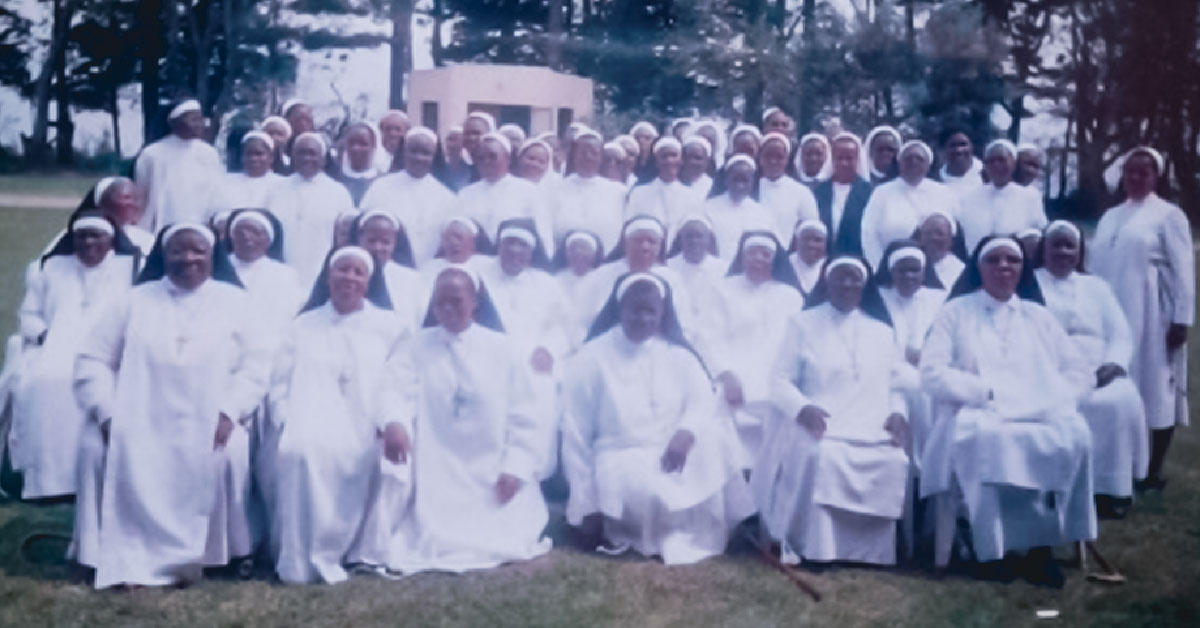
Current Habit of the Daughters of St Francis
In his letter, Bishop Fleischer wrote:
“I want to start an all-African indigenous congregation here in South Africa. Many people, even the very Christians, forget that they have an immortal soul, they go about as though they were only body figures. These people are quite oblivious to their Creator, they do not worship Him as their Creator, and they do not worship Him worthily.
“There are also other people in the world who do not only worship God in the usual way, or common to other people, but consecrate themselves extra for His service, dedicate their lives to God, these separate themselves from other people like the Apostles: ‘Renounce all, and follow Christ’.”
Given the size of the Vicariate at that time, the message travelled quite wide, fueled by the prayers of the faithful.
The first young women who responded to the bishop’s call did exactly that, some leaving their fiancées, and so disappointing them.
On December 8, 1922, in the early hours of the morning at Sacred Heart chapel in Mariannhill, these young women were clothed, received the veil and the name“Daughters of St Francis of Assisi”. The same clothing ceremony took place on the same day in Rhodesia in the mission stations of Triashill and Monte Cassino, where Bishop Fleischer worked as a priest.
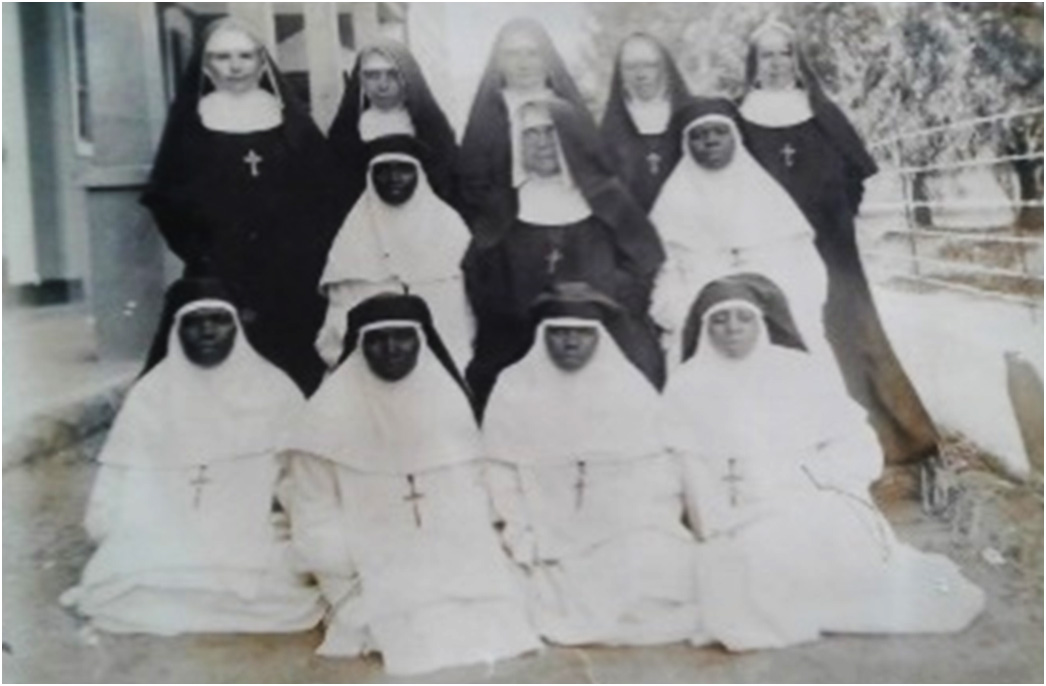
The First Group professed their First Vows of Consecrated Life at Cala, Eastern Cape on the 8th December 1928.

The Second Group of the First Sisters, made their First Profession on the 15th December 1928, in Assisi Convent, Natal. There were 15 Sisters in total.
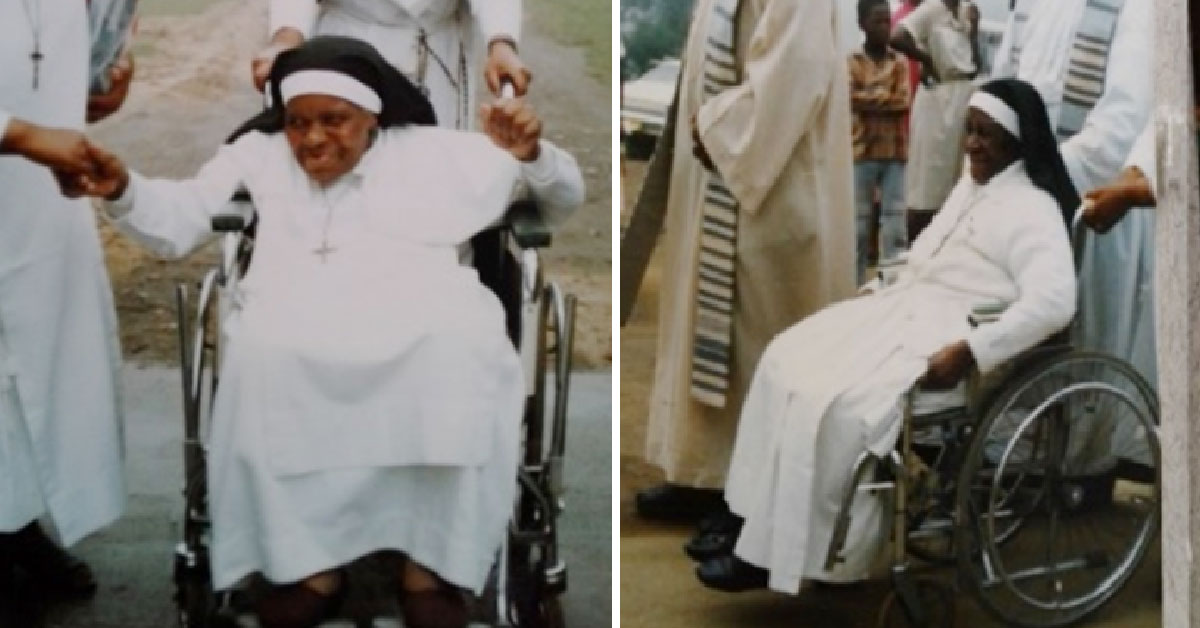
First Diamond Jubilee 1988. (Left) Sr Theresa Vezi FSF, Hlokozi. (Right) Sr Rufina Mutuswa FSF, born in Triashill
Bishop Fleischer gave this newly found congregation this Charism: “The Glorification of God by following Poor and Crucified Christ”, as expressed in the Third Order Rule of St Francis of Assisi. Its mission: To remind people they are made in the image and likeness of God.
First, they were to live that in their lives; in their disposition through their pursuit of holiness (as God said: “Be holy, for I AM HOLY.”) Secondly, they were to engage themselves in the pastoral activities of the Church, responding to Christ’s call to the congregation’s patron: “Francis, build my Church”).

The Daughters of St Francis of Assisi have been trying to live the above over these past 100 years, within the diocese of Mariannhill and other dioceses in South Africa. Currently the congregation is active in six dioceses: Mariannhill, Durban, Umzimkulu, Eshowe and Kokstad within the Durban metropolitan region, and in Bethlehem, Free State.
The engagement in pastoral activities ranged from taking part in (a) building new churches in the diocese; (b) in the translation of liturgical articles, some Church documents and celebration hymnals; (c) in teaching catechism and Bible; (d) in teaching incoming missionaries the Zulu language, which is still ongoing, (e) in doing parish office work, (f) giving retreats and spiritual accompaniment where needed; and in many other mission works.
Among the translations, the FSF Sisters have done is the famous work of Thomas a Kempis, which they translated into isiZulu, as Ukulandela uKristo. For this work we remember with gratitude the contributions of Sr M Thomas-More Mswazi FSF and Sr M Benadette Sibeko FSF (well-known as uMaSwazi), whose works in the congregation remain a memorable treasure.
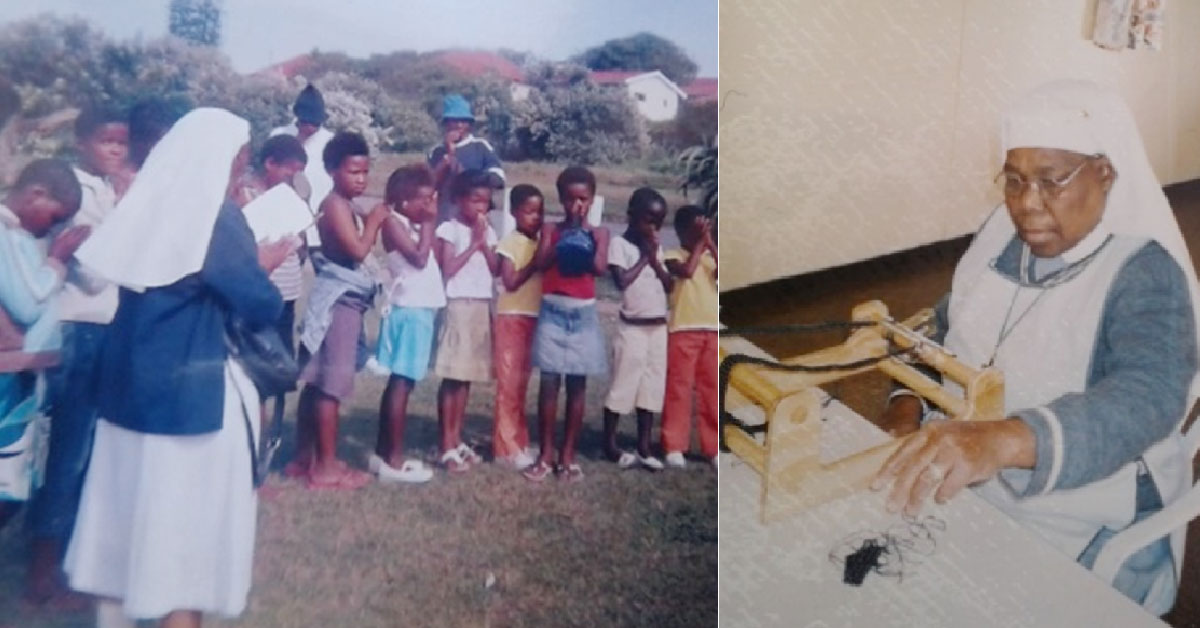
FSF various ministries
However, that pastoral involvement has evolved over the years from direct to indirect evangelisation through other ministries. such as education, health care, and social services; through providing residential care, and through community outreach programmes.
The fruits of The Vision of Bishop Fleischer for an “all African religious congregation were at least realised partly in his lifetime. We thank God who brings to fruition all that is intended for His Honour and Glory. GLORIFICATION OF GOD is THE CHARISM of the Daughters of St. Francis of Assisi.
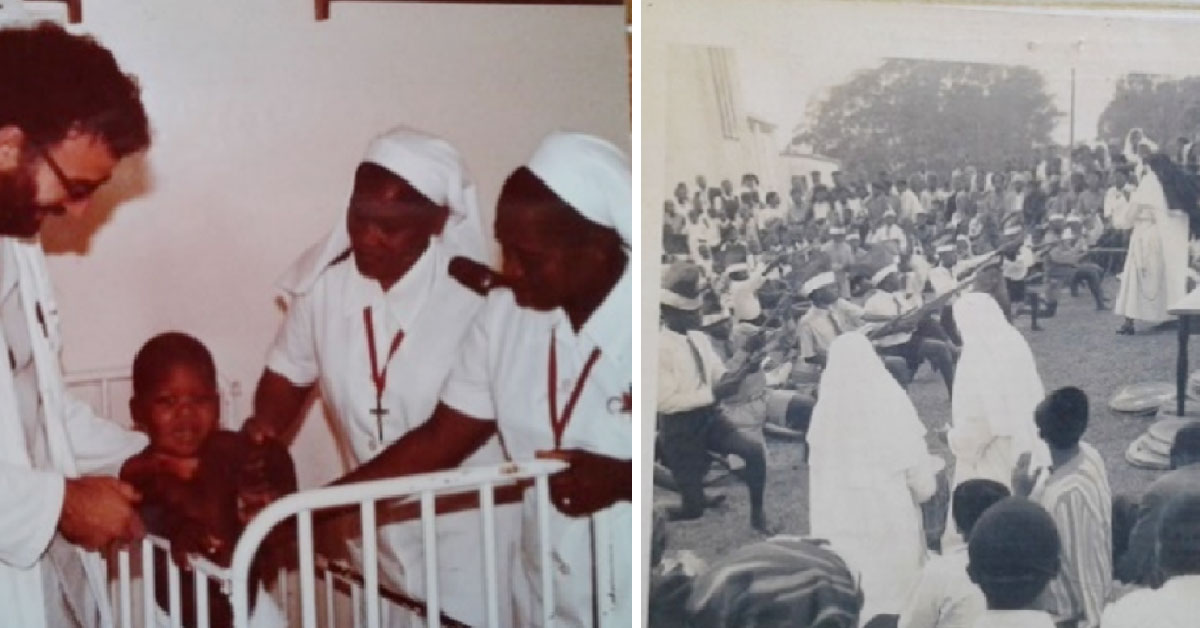
FSF various ministries
The congregation recently has given birth to another branch of associates; for those who feel the same “heatwave” felt by the first women. The FSF Associates are deeply moved by the ever-fresh words of Bishop Fleischer: “People, even the Christians, have forgotten that they have immortal soul…”. The calls for a New Evangelisation by Popes John Paul II, Benedict XVI and Pope Francis are not new for the Daughters of St Francis of Assisi — it has been with them for 100 years, in good and in bad times.
The FSF Associates echo Bishop Fleischer’s message: “This call is extended to the families.”The message is for everyone – in every age.
Leadership Ministry in the congregation over the years:
Mother Aemiliana tended and built the foundation of the FSF congregation for 27 years and was succeeded by Mother Jucundis Leufker, who also led the congregation with remarkable developments that uplifted the lives of many families in the rural South Coast of Natal.
African sisterhoods were involved in bringing services to the poor through the new small Assisi hospital in their locality, and so created job opportunities for many men and women at that time.
Mother Jucundis served the congregation for 29 years. Both Mothers Aemiliana and Jucundisare are buried among the FSF Sisters.
Sr Irene Nelles CPS, who is still alive, succeeded Mother Jucundis in leading the congregation and in taking it through the transition to autonomy. She successfully did that for six years and happily concluded the period of leadership of the Precious Blood Sisters by handing it over to Sr M Julia Memela FSF, a product of Centocow mission in the diocese of Umzimkulu. Sr Julia became the first black directress-general and served the congregation for two terms, completing a period of ten years. From her time of leadership, the succession has remained in the hands of the FSF congregation.
The FSF congregation would like to thank the clergy: those who have gone before us and those who are still alive. The many vocations that this congregation have received from the beginning, came through your support.
Thanks to the Daughters of St Francis of Assisi for this information
- Springs of Carmel diary 2026 launched - October 24, 2025
- Mass Readings: 26 October – 2 November, 2025 - October 21, 2025
- Legion of Mary Holds Rosary Tableau in Cape Town - October 20, 2025





